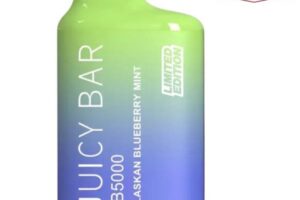1. Introduction
Hot rolled (HR) steel sheet, coil, and strip are widely used steel forms produced through the hot rolling process—where steel is rolled above its recrystallization temperature. This method ensures malleability and workability, making HR products economical and versatile. Their common uses span automotive bodies, general construction, machinery, shipbuilding, and more.
2. Understanding the HR Rolling Process
The hot rolling process involves heating steel slabs or billets to a high temperature (typically over 1,000 °C), then passing them through rollers to achieve the desired thickness and shape. Key steps include:
-
Heating in a furnace to recrystallization temperatures.
-
Rough rolling, reducing thickness and breaking down the structure.
-
Finishing rolling, refining thickness to produce sheets, plates, or strips.
-
Coiling, for sheets and strips, or cutting, for plates.
This process imparts an oxide scale on the surface and a coarser finish compared to cold-rolled products.
3. Product Variations: Sheets, Plates, Coils, and Strips
-
HR Steel Sheets: Thinner gauge products—usually up to 6 mm—that are coiled for transport, later cut or formed as needed.
-
HR Steel Plates: Heavier-duty (often thicker than 6 mm, up to 200 mm) and typically supplied as flat, cut-to-length sheets rather than coiled.
-
Coils and Strips: Coiled sheets, with strips further processed into narrower widths. These are used in metal forming and fabrication.
4. Technical Properties & Mechanical Characteristics
Chemical Composition
HR steel typically contains carbon (up to ~0.30%), manganese, phosphorus, sulfur, and traces of silicon—depending on specific grades (e.g., ASTM A36, IS 2062, EN S235JR).
Mechanical Properties
Due to hot rolling above recrystallization temperatures, HR steel has a more uniform grain structure and enhanced ductility. Common mechanical benchmarks include:
-
Yield Strength: ~250 MPa (varies by grade)
-
Tensile Strength: 400–550 MPa
-
Elongation: 20–25%
Versus cold-rolled steel, HR is more ductile and easier to form but with looser tolerances and a rougher surface.
5. Advantages of HR Steel Sheet & Plate
-
Cost-Effective: Economical for high-volume and large-scale applications because hot rolling is energy-efficient and fast.
-
Excellent Workability: The hot process makes the steel highly formable and weldable.
-
High Toughness: Provides good structural strength even under harsh conditions.
-
Wide Availability: Produced in many thicknesses, widths, and grades across global mills.
6. Trade-Offs & Limitations
-
Surface Roughness & Scale: HR steel comes with mill scale and a matte finish; surface preparation (like pickling or grinding) may be needed for painting or galvanizing.
-
Dimensional Tolerances: Thicker and more variable, making HR less ideal for precision applications.
-
Straightness: Slight camber or distortions can be present due to the hot rolling process.
-
Lower Surface Finish Quality: Not suited for high aesthetic or cosmetic requirements.
7. Common Applications
-
Construction: Structural beams, columns, roofing panels, and building components.
-
Automotive: Body panels, chassis members, and industrial frames.
-
Industrial & Heavy Machinery: Fabric tents, machine beds, agricultural equipment.
-
Shipbuilding & Rail: Hulls, decks, and railcars where toughness and strength are vital.
-
Bridges, Tanks, and Pipelines: HR’s robust nature makes it ideal for infrastructure.
8. Post-Processing & Finishing Techniques
To adapt HR steel for specific applications, post-processing is common:
-
Pickling and Oiling: Removes scale and adds surface protection.
-
Blasting/Grinding/Polishing: Prepares the surface for finishing or painting.
-
Galvanizing: Adds a corrosion-resistant coating.
-
Heat Treating: Improves mechanical properties like hardness or strength.
-
Coating/Painting: Final aesthetic or protective layers for consumer or outdoor usage.
9. Standards & Specifications
HR steel is regulated by various international standards:
-
ASTM A36 (USA): General structural steel.
-
IS 2062 (India): Structural steel grades for general engineering.
-
EN S235JR / S355JR (Europe): Rolled steels for structural applications.
Each standard (and its associated grade) defines requirements for chemical makeup, tensile/yield strengths, elongation, testing, and labeling. Check local or project-specific codes for exact specifications.
10. Hot Rolled vs. Cold Rolled: Quick Comparison
| Feature | Hot Rolled Steel | Cold Rolled Steel (CR) |
|---|---|---|
| Production Temp | Above recrystallization | Room temperature |
| Surface Finish | Rough / scaly | Smooth / shiny |
| Tolerance Precision | Moderate | High |
| Cost | Lower | Higher |
| Ductility | Higher | Lower |
| Ideal Application | Structural, industrial, large parts | Precision, cosmetic, tight dimensions |
11. Economic & Supply Considerations
HR steel pricing varies based on global demand, raw material costs (iron ore, coal), energy prices, and supply chain trends. Market sectors like construction, automotive production, and infrastructure development strongly influence HR steel supply-demand dynamics.
Environmental considerations are also key: many mills are adding recycling efforts and clean-energy technologies, improving sustainability and reducing carbon footprints.
12. Tips for Choosing HR Steel Products
-
Define Requirements: Determine needed thickness, width, length, and tolerance precision.
-
Assess Grade Needs: Choose based on load-bearing capacities, weldability, and existing codes (e.g., A36 or S355JR).
-
Plan Surface Treatments: Decide if scaling, corrosion resistance, or finishing is required.
-
Estimate Budget & Volume: HR steel is most beneficial when used in larger quantities for cost-efficiency.
-
Verify Supplier Quality: Look for certified mills, supply chain traceability, and documentation such as mill test reports.
13. Innovations & Future Outlook
-
Advanced High Strength Steels (AHSS): New HR grades with better strength-to-weight ratios for lighter, stronger designs.
-
Sustainable Production: Efficient furnaces, electric furnaces, and steel recycling drive greener manufacturing.
-
Hybrid Finishes: Innovations combining hot-rolling with special coatings or controlled cooling to offer better performance and surface quality in one step.
Conclusion
Hot rolled steel sheet, plate, coil, and strip remain fundamental to modern engineering and manufacturing—valued for their cost-efficiency, durability, and flexibility. Though they present rougher surfaces and modest tolerances, proper post-processing and correct grade selection allow HR steel to meet a wide spectrum of industrial needs.

